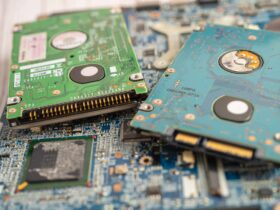How does internet work , it is biggest curiosity in the world .In the modern world of technology, the Internet plays a crucial role in our everyday lives, connecting millions of devices around the globe. If you’re reading this article via your smartphone, laptop or tablet, you’re together online. What is the Internet, what is it, and exactly how do they function?
What is the Internet?
The Internet comprises a worldwide system of interconnected computer networks which communicate together through standard protocols. It enables devices such as smartphones as well as computers and servers to exchange data and collect access information.
How Does the Internet Work?

The Internet is the combination of both software and hardware systems that permit data to travel between different locations. This is a step-by-step guide:
Connecting Your Device to the Internet
If connecting your gadget (e.g., smartphone, tablet or PC) to the Internet, it will usually connect it via WiFi or Ethernet cable. This connects the device with a network local to it, typically controlled through the ISP (ISP) like Comcast or AT&T. Your ISP assigns your device an IP address that identifies it as a device on the Internet.
Requesting Information via URL
When you go to the website, type the URL (e.g., www.example.com) or click a link you’re sending a message. The request is transmitted as packets, which are small pieces of data, via an operation known as packet switching. These packets traverse networks before reaching their destination. This way internet work for requesting information.
Role of DNS (Domain Name System)
Prior to accessing the site that you have sought, your device calls the DNS server to convert the site’s URL into an IP. Imagine DNS as DNS like the Internet’s telephone book. It transforms human-friendly URLs into numerical IP numbers that computers recognize.
Data Travels Through Routers
After it is established that the DNS determines an IP address, data packets are routed through several networks and routers. Routers guide these packets to their final destination, providing the most efficient route. The Internet is a vast network of routers that warrant information is moved quickly and safely.
Accessing the Server
Your request is finally sent to the server on which the information or website is saved. Servers are computers with powerful capabilities that can store website files such as videos, images, and other information. The server processes your request and then sends relevant information back to your device as packets.
Displaying the Information
After the data packets have arrived back on your device, the browser will be able to reassemble them and display the material. The entire process takes minutes, which allows you to navigate the web easily.
Key Technologies That Power the Internet
- IP (Internet Protocol): Governs how data is transferred and received on the web.
- TCP/IP (Transmission Control Protocol/Internet Protocol): Ensures the secure transfer of information packets.
- HTTP/HTTPS (Hypertext Transfer Protocol/Secure): Facilitates communication between web browsers and servers.
- Fiber Optics : as well as cable physical infrastructure, transports data across the world.
Why Is Understanding How the Internet Works Important?
Knowing how the internet functions will boost your security online, benefit you in troubleshooting connectivity issues, and improve your browsing experience. In everything from wireless routers to fiber optic cables, understanding the ins and outs of the Internet will equip you with the information needed to make better tech choices.
Final Thoughts
In short, the way internet work , it is a massive and intricate system that connects millions of computers across the globe. By using IP addresses, DNS servers, routers, and data packets, the Internet facilitates rapid and effective communication over vast distances.
The way the web operates might take a lot of work initially. However, it’s a crucial aspect of how we navigate the digital landscape. Suppose you’re surfing web pages, sending emails, or streaming video material. In that case, you have a better understanding of the intricate system that runs at the heart of it all.






Leave a Reply